The US jobs report was out Friday night and was decent but not cigar so far as markets were concerned. The headline number of 192k missed expectations of 200k only slightly but clearly markets were expecting better and sold aggressively. Given the winter softness I’m not sure why. Here are the charts from Calculated Risk:
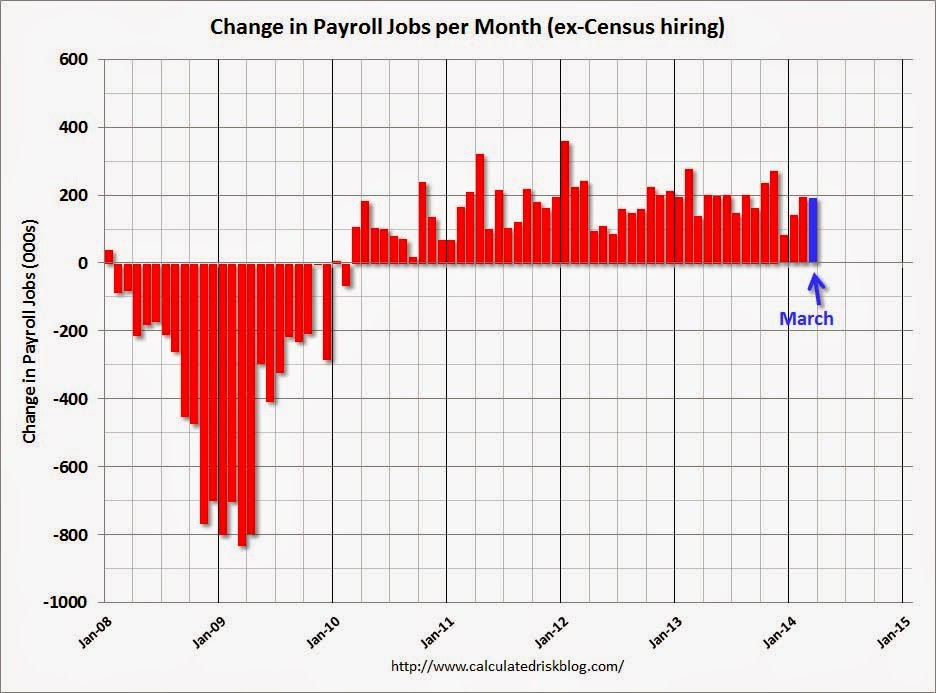
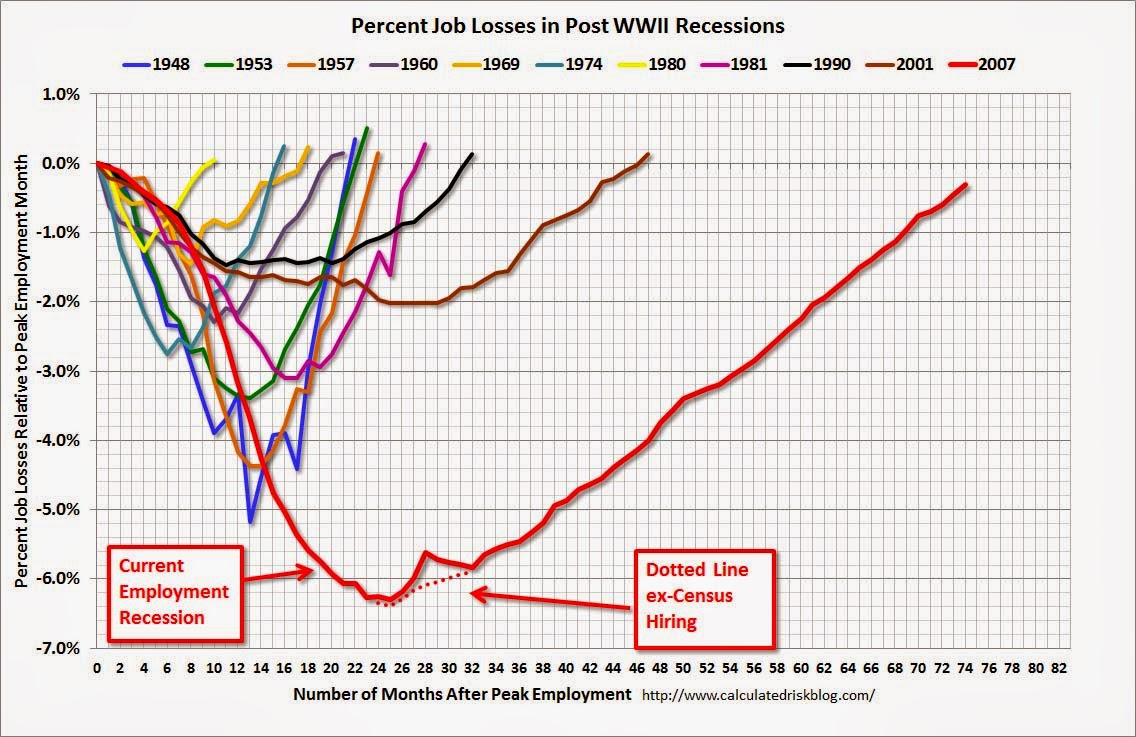
And one final chart for the Bernanke haters out there. This is the fastest rebound in total employment in the history of financial crises (Japan delayed the inevitable):
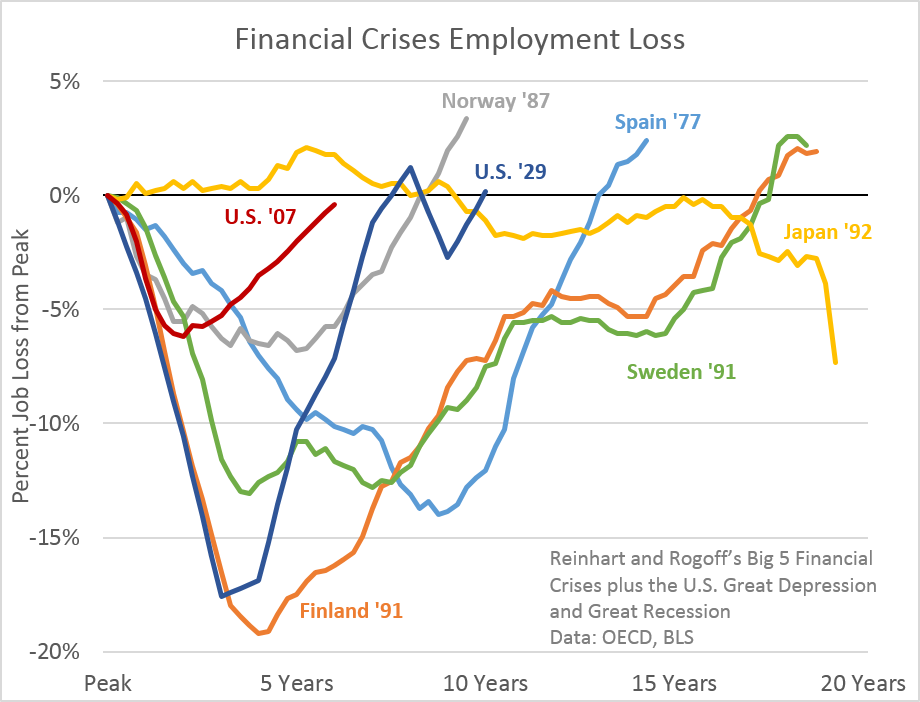
Stocks were punished 1.25% and bonds were bid strongly. Yields at the short were crushed from recent highs. At the long end, the 30 year yield fell 1.1% and the chart remains bullish with the downside break of the descending triangle still in play:

The 10 year yield fell 2.3% to 2.73%. It’s rising channel is intact but it is bumping up against what could be a similar descending triangle:

That was enough to send the 10 year yield spread with the Australia to 142bps and it has a bearish ascending triangle pattern:
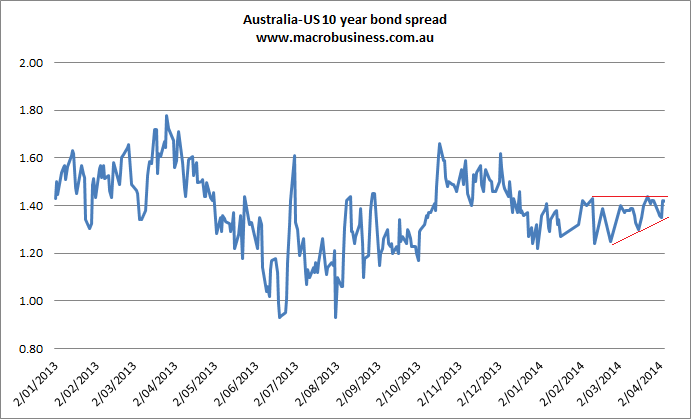
Gold also roared 1.5%:
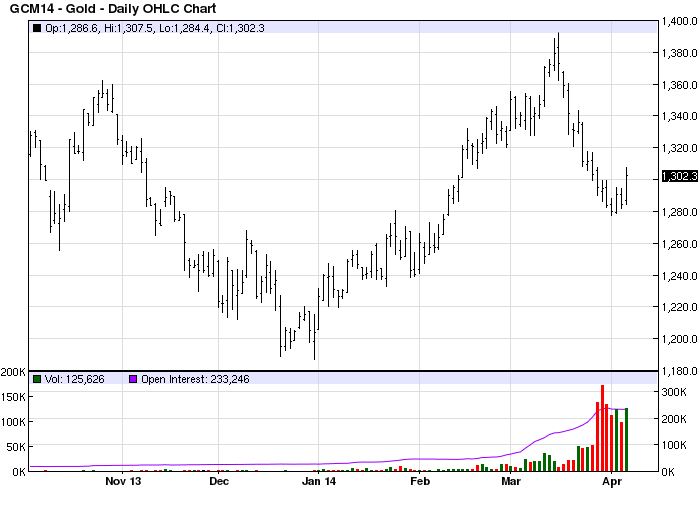
And the US dollar took a little breather but is still firming in its sideways channel:
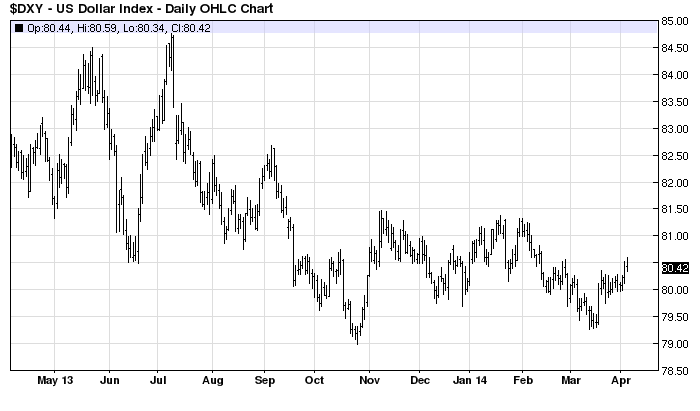
And the world’s favourite punt, risk on or risk off, took off:
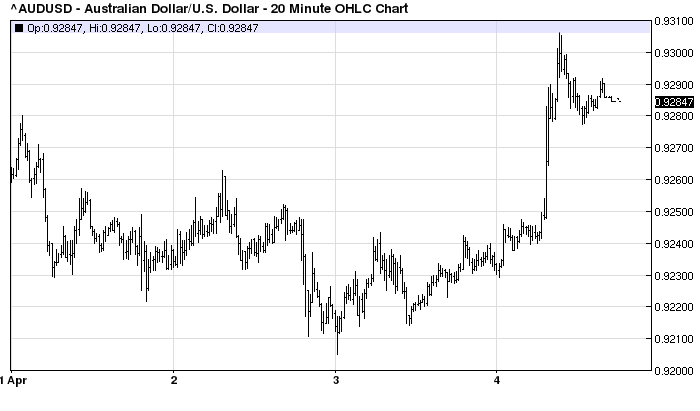
This action looks more like a little snap back within larger trends to me as the jobs report disappointed enough for a few punters to consider taper taper. I’d expect it to work itself out as the post-winter US snap back continues.

